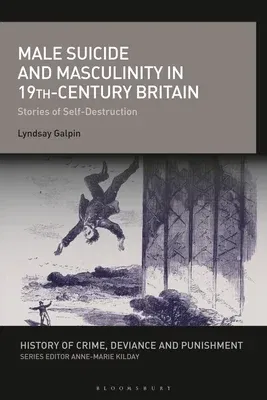Lyndsay Galpin
(Author)Male Suicide and Masculinity in 19th-Century Britain: Stories of Self-DestructionPaperback, 30 November 2023

Temporarily out of stock
Free Delivery
Cash on Delivery
15 Days
Free Returns
Secure Checkout

Part of Series
History of Crime, Deviance and Punishment
Print Length
200 pages
Language
English
Publisher
Bloomsbury Academic
Date Published
30 Nov 2023
ISBN-10
135026492X
ISBN-13
9781350264922
Description
Product Details
Author:
Book Format:
Paperback
Country of Origin:
US
Date Published:
30 November 2023
Dimensions:
23.39 x
15.6 x
2.54 cm
ISBN-10:
135026492X
ISBN-13:
9781350264922
Language:
English
Location:
New York
Pages:
200
Publisher:
Weight:
453.59 gm